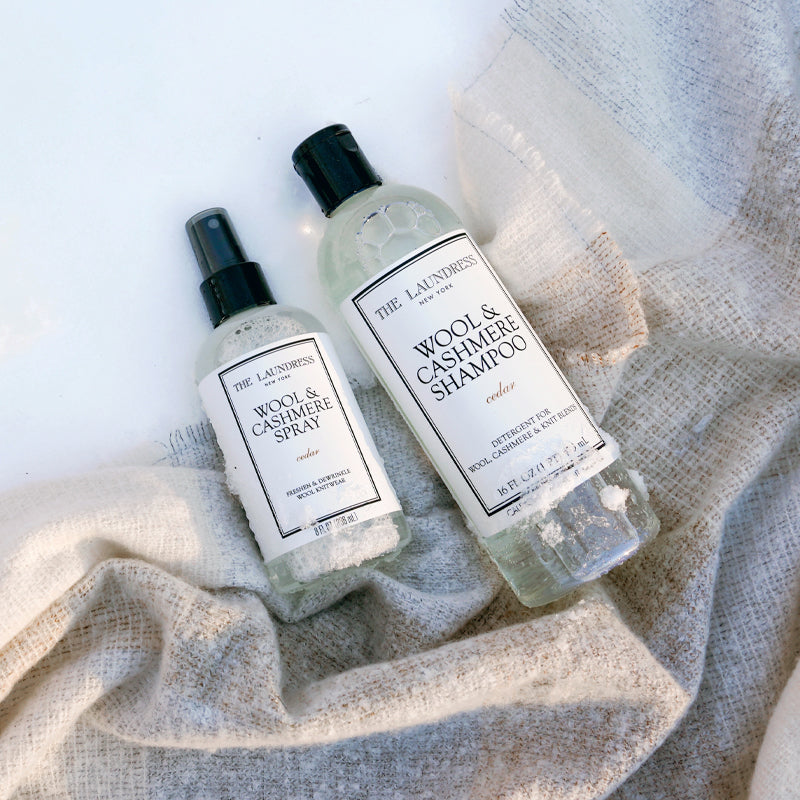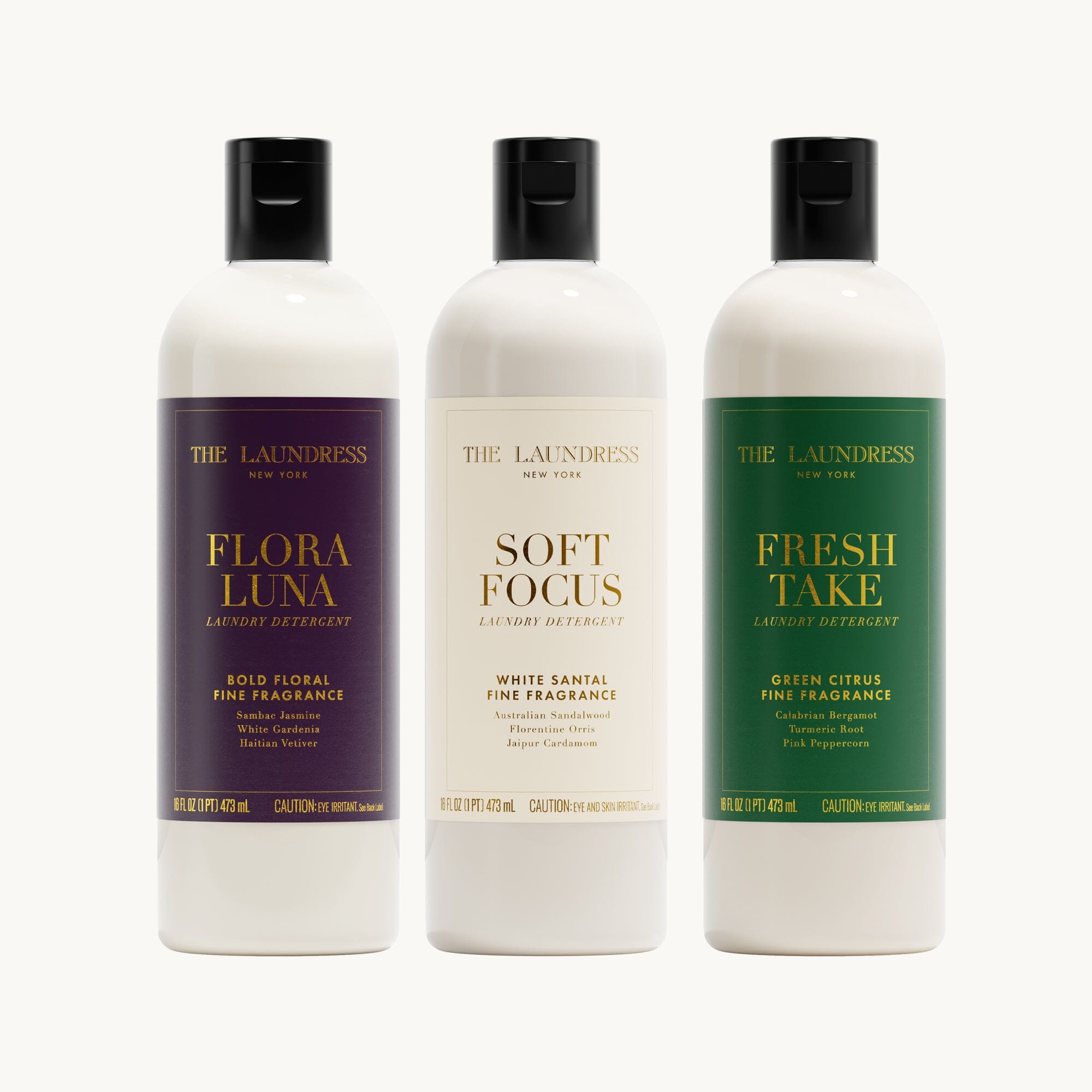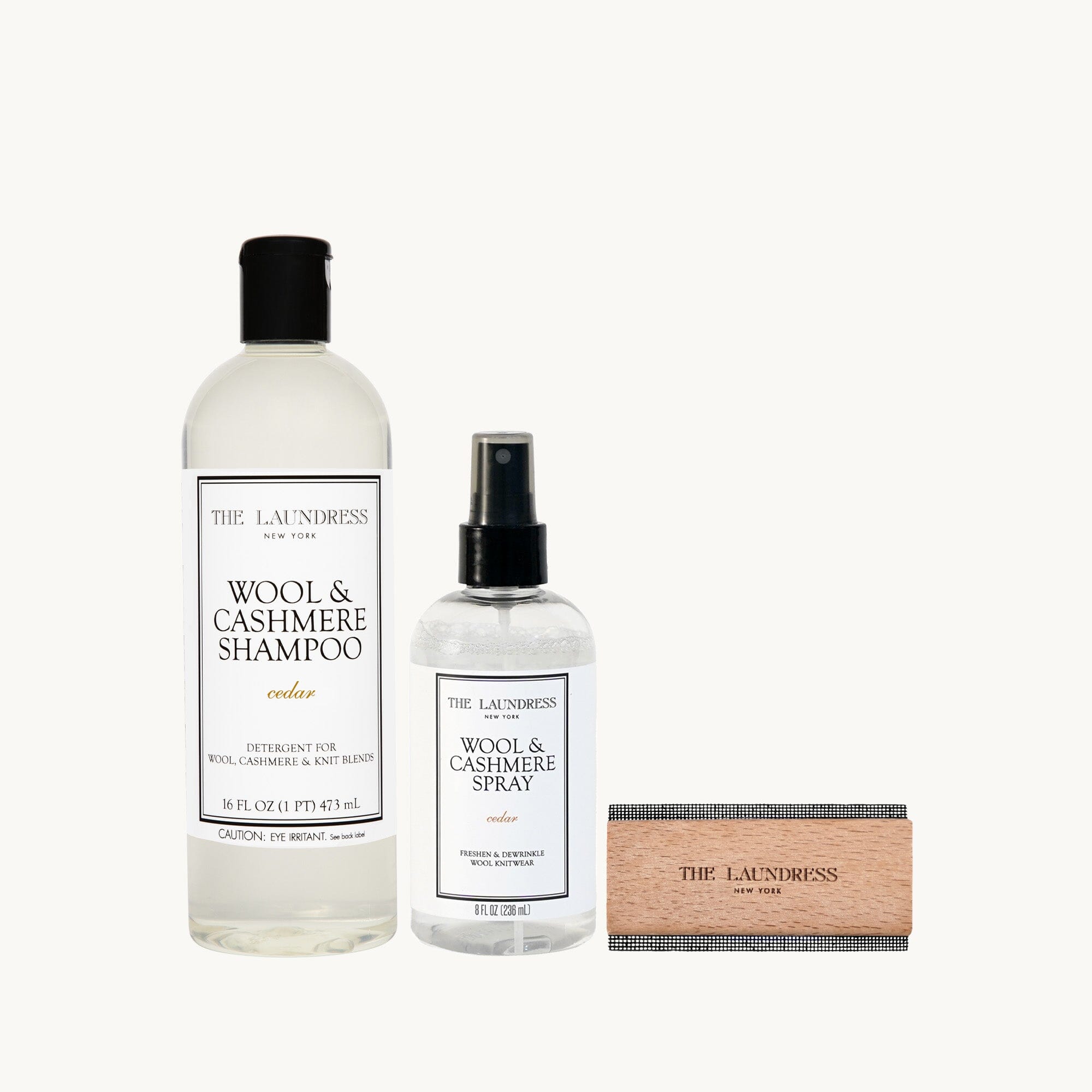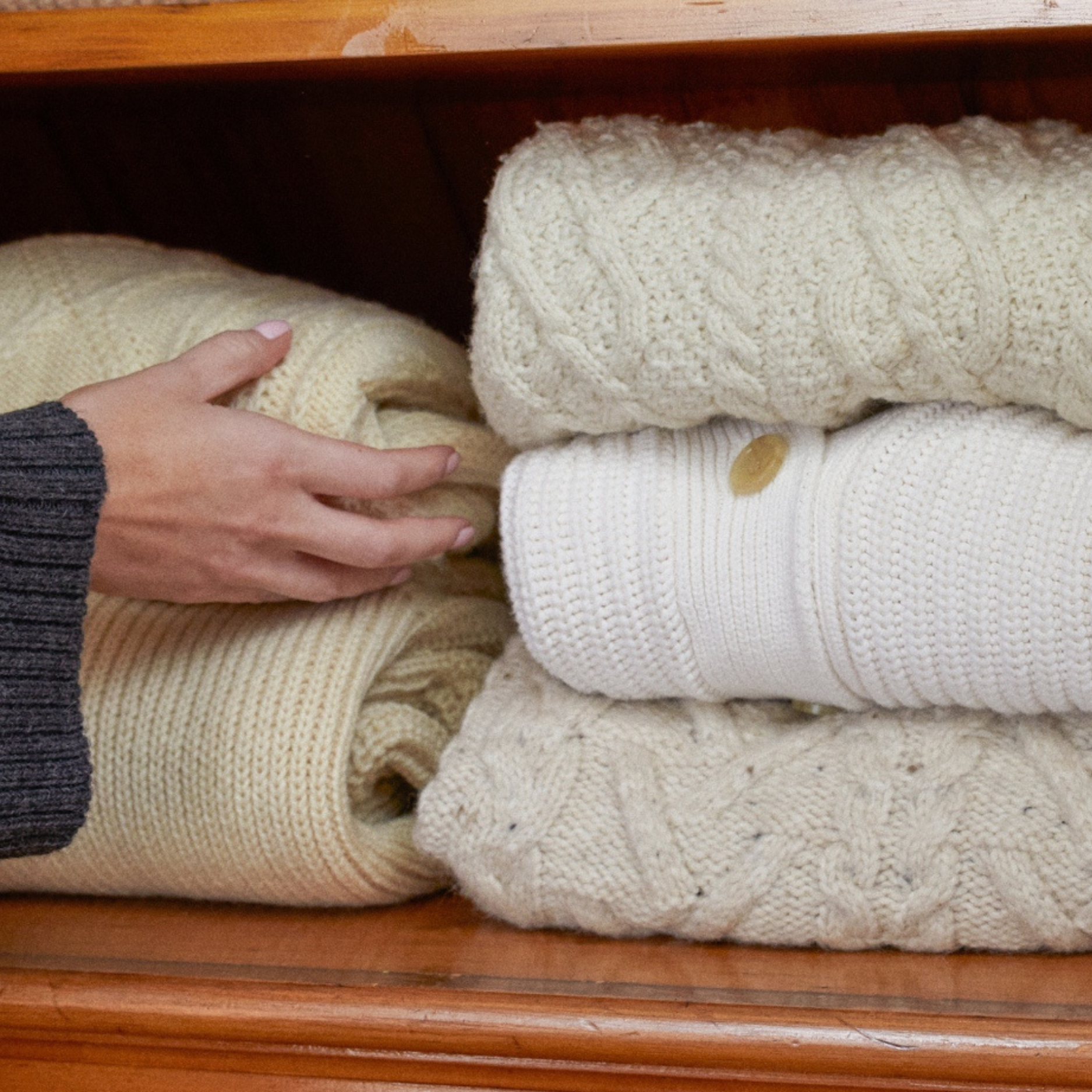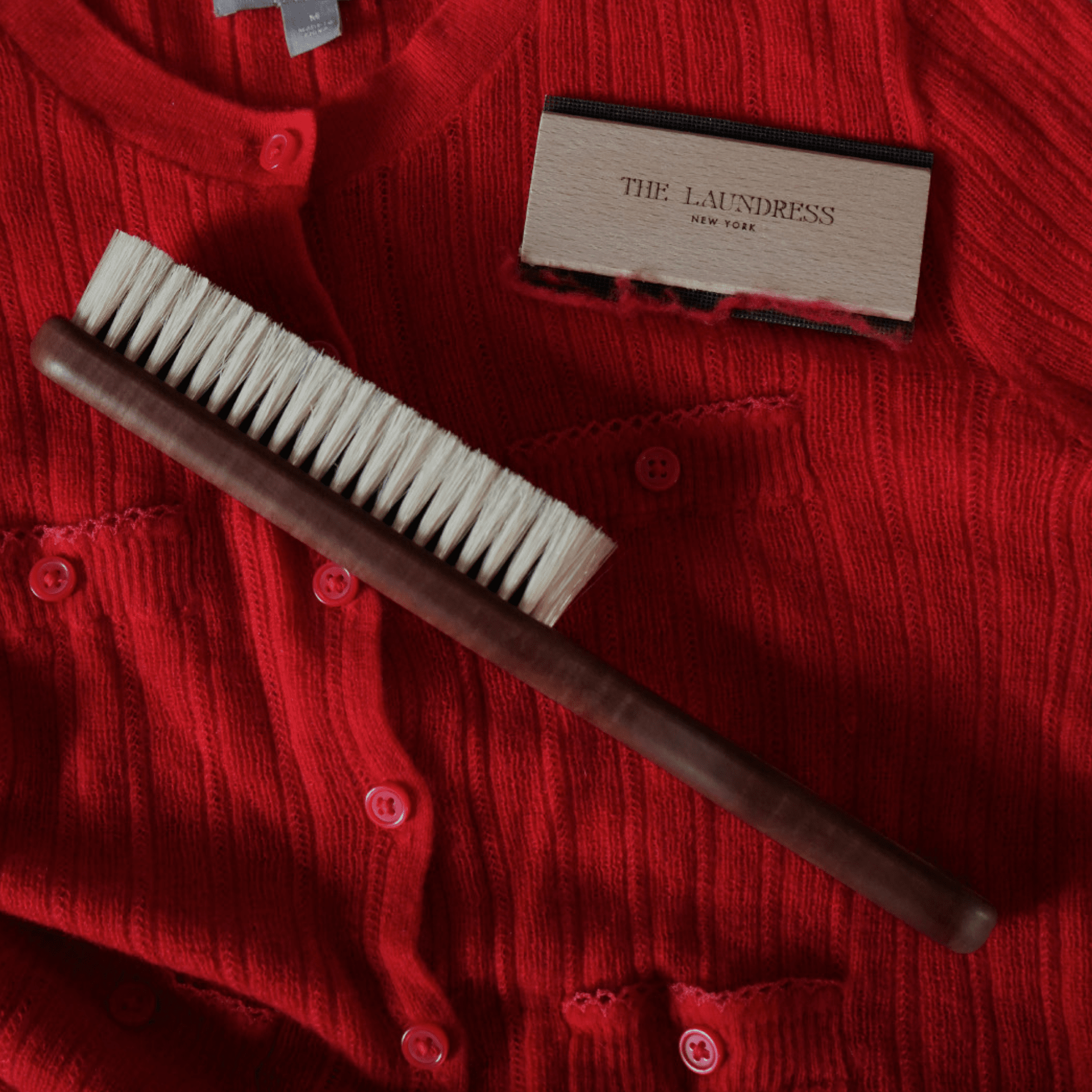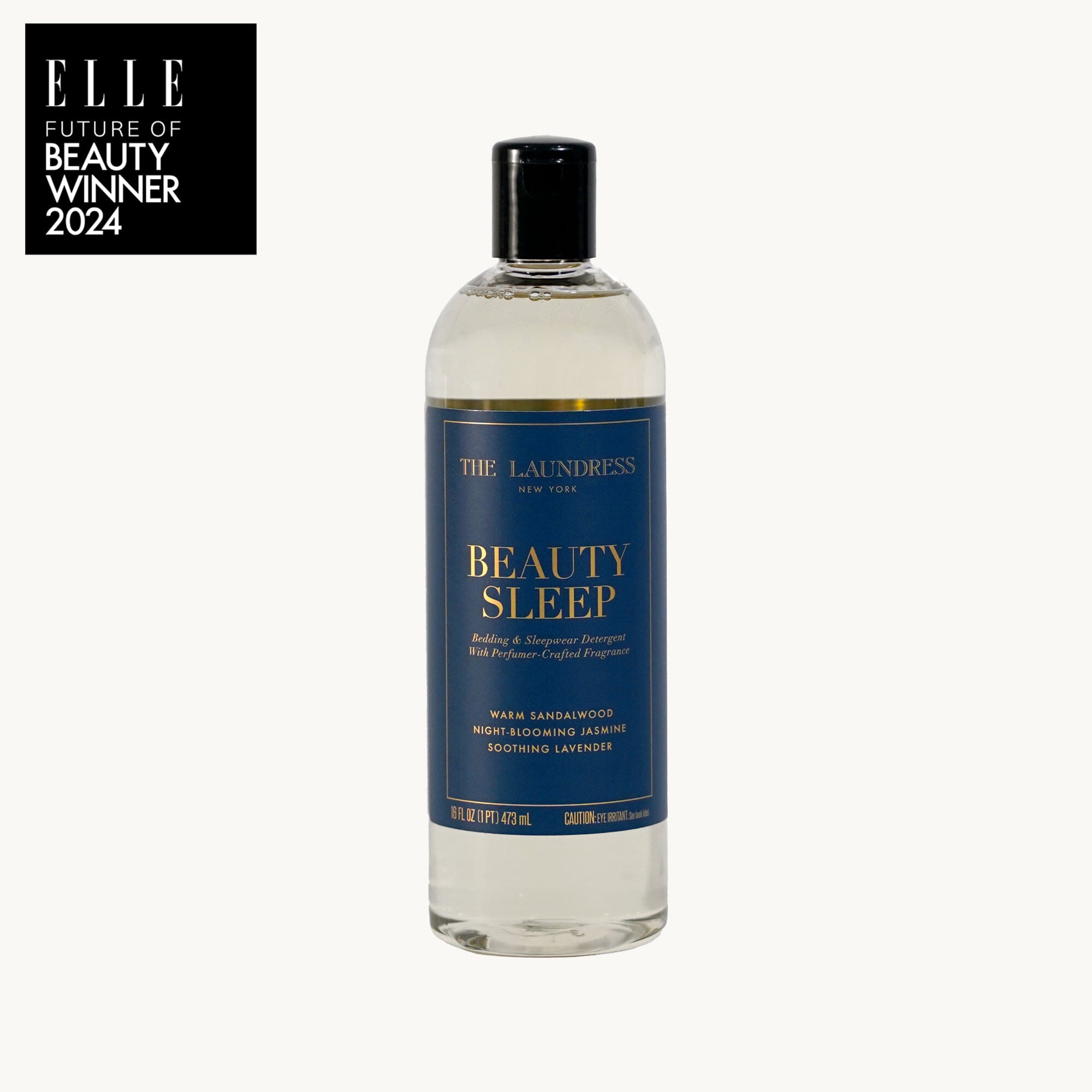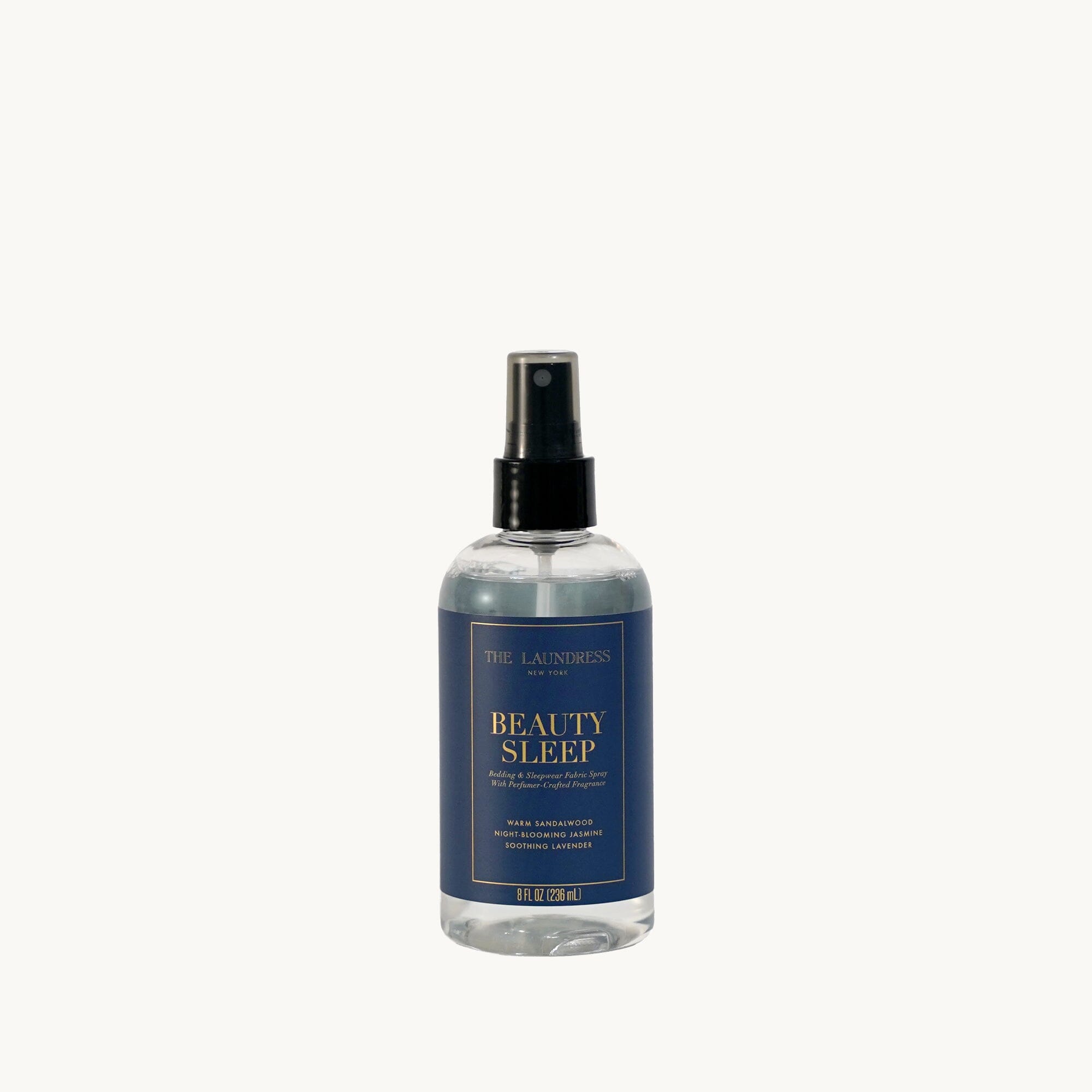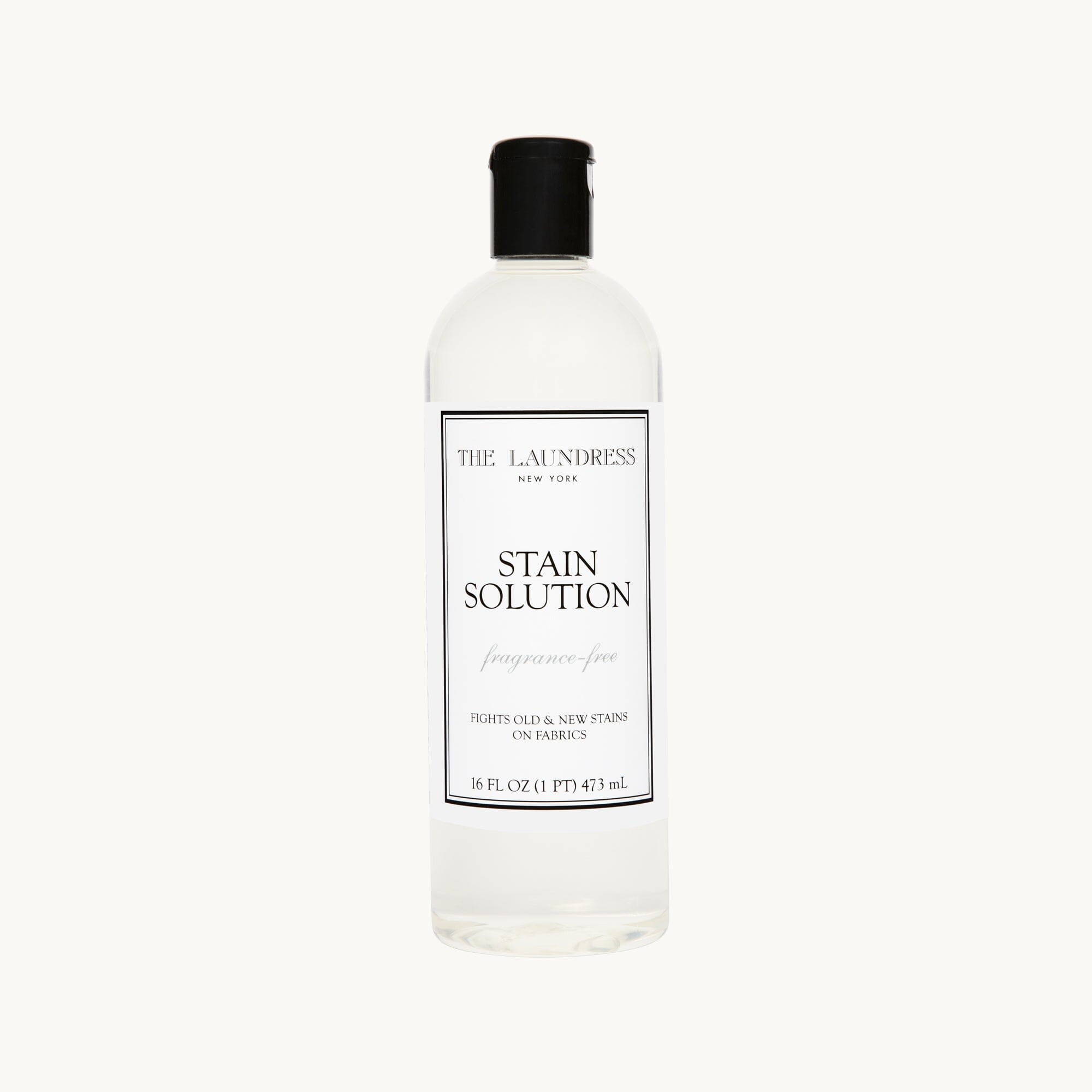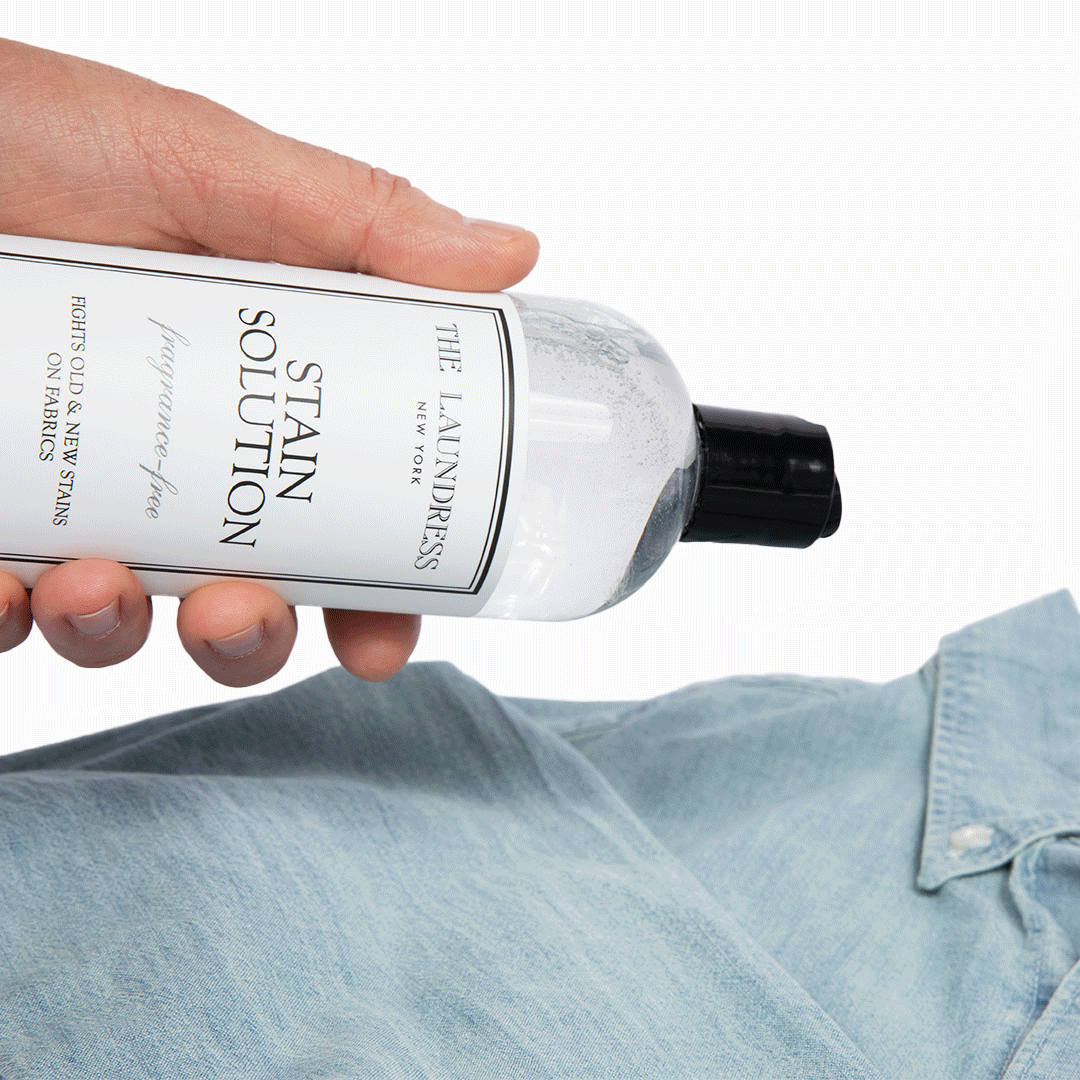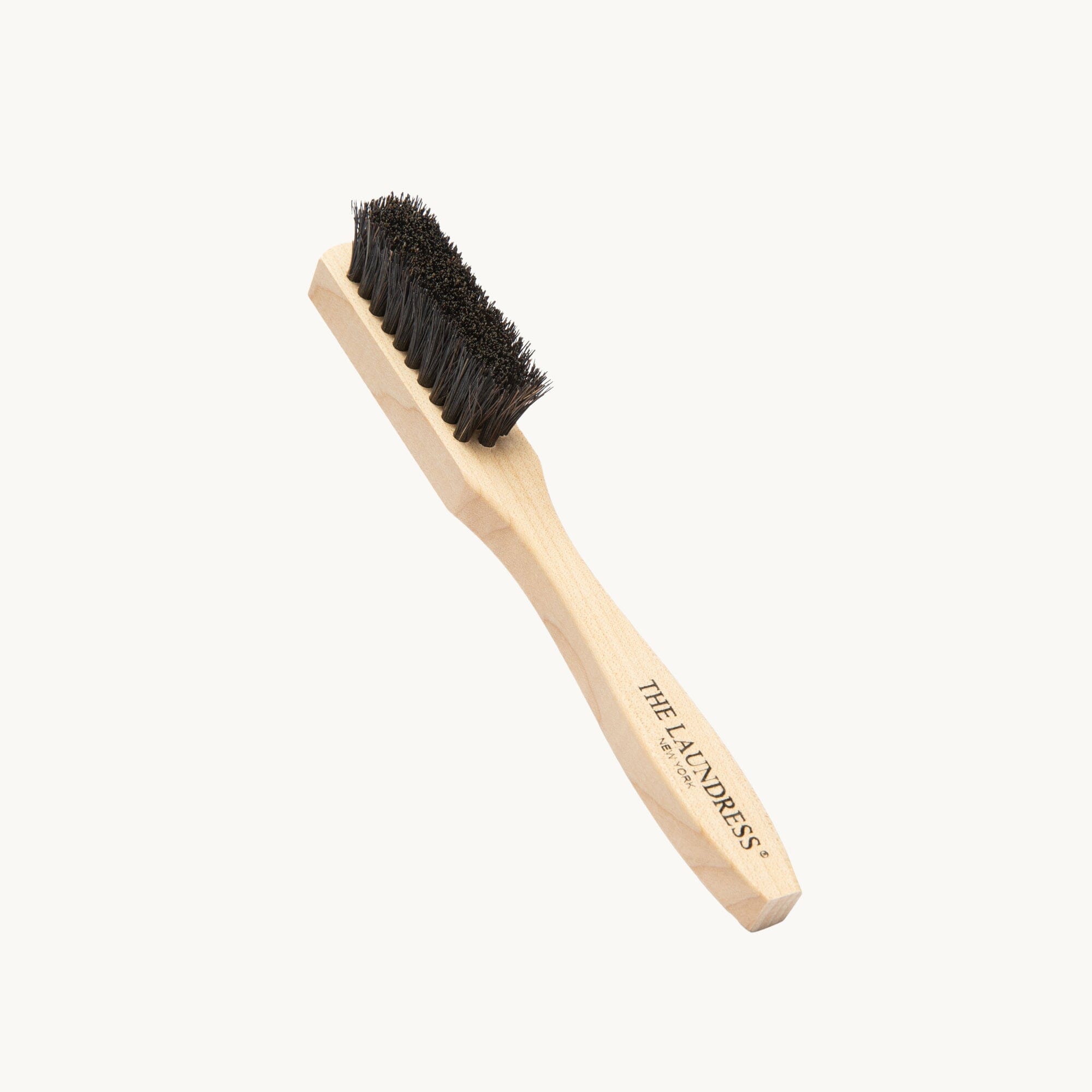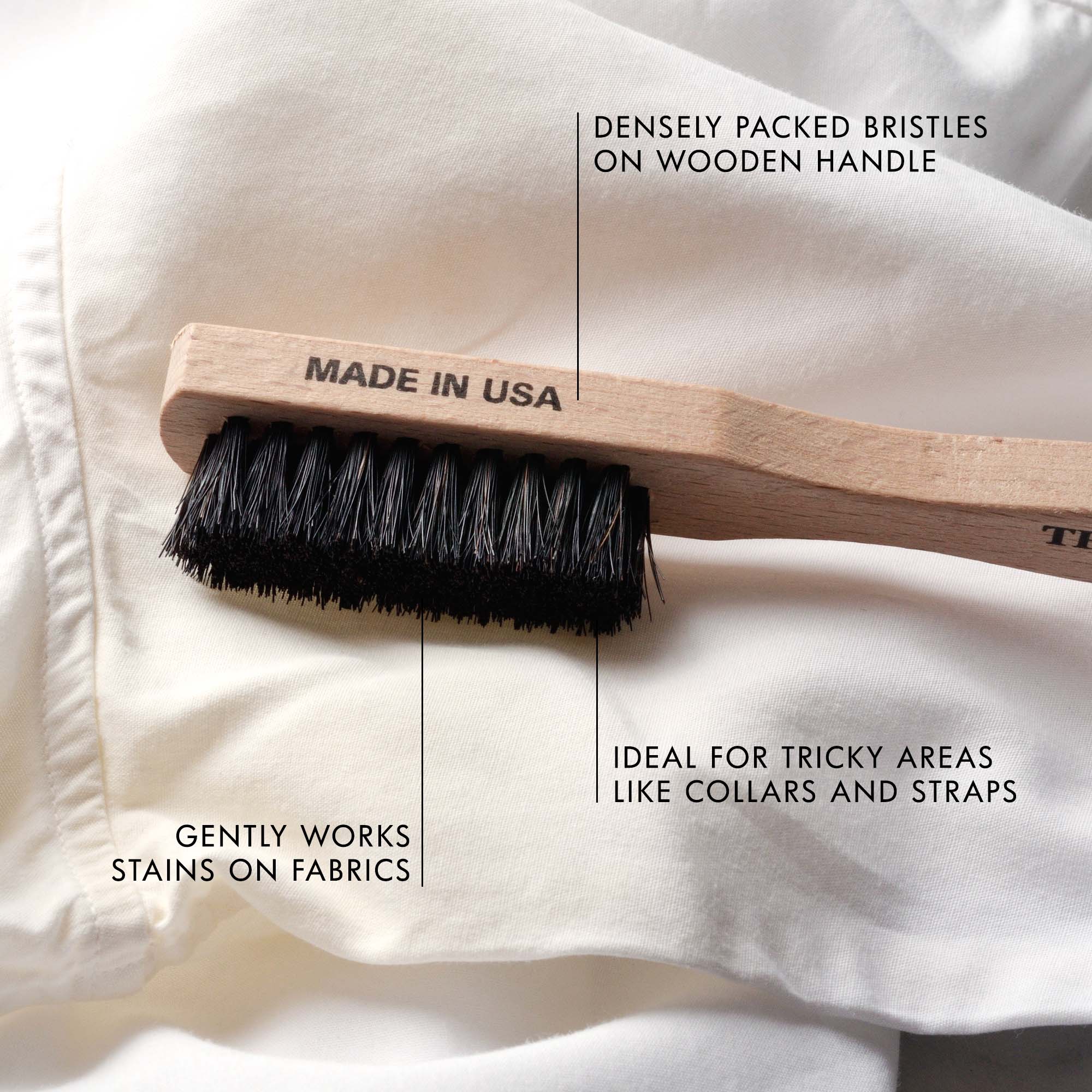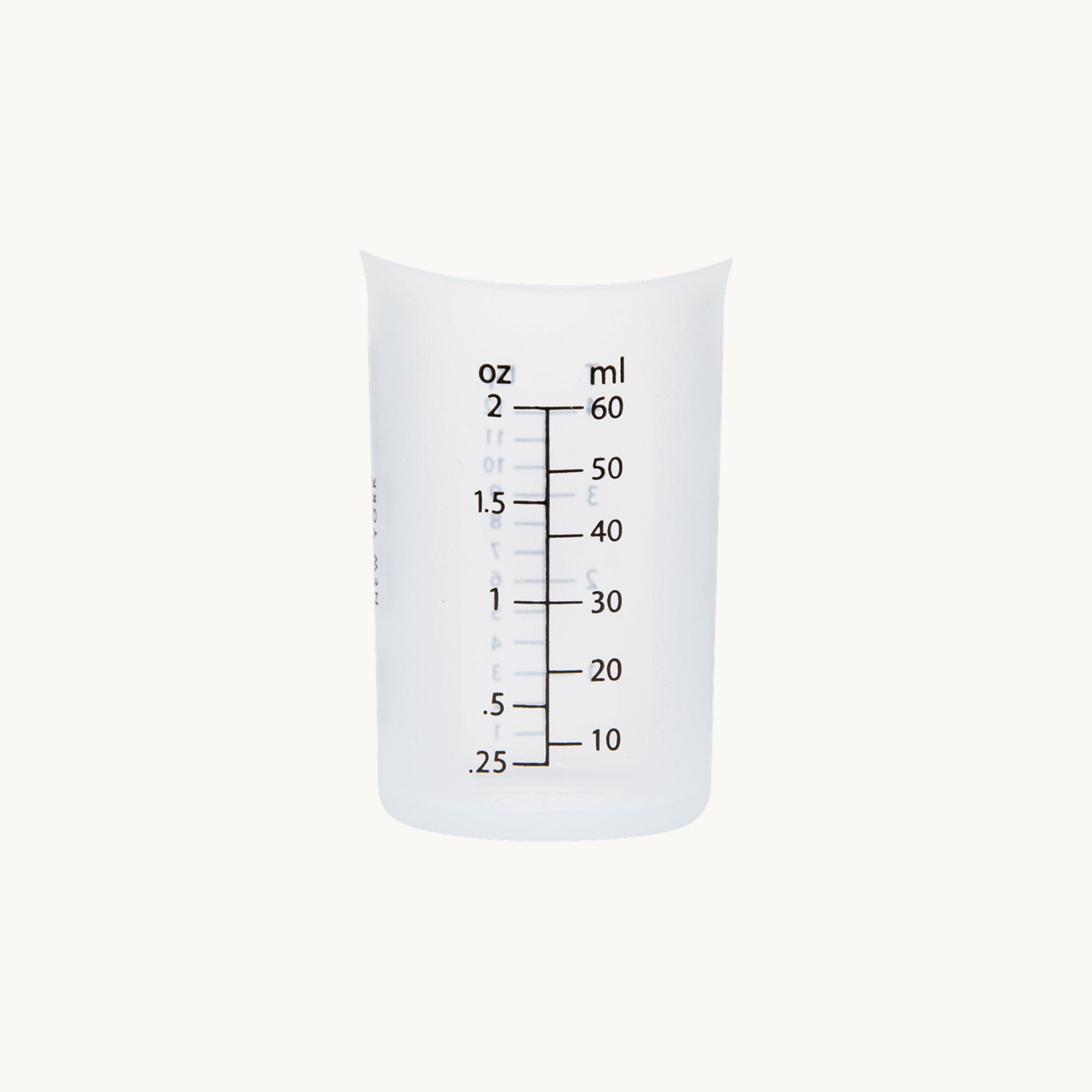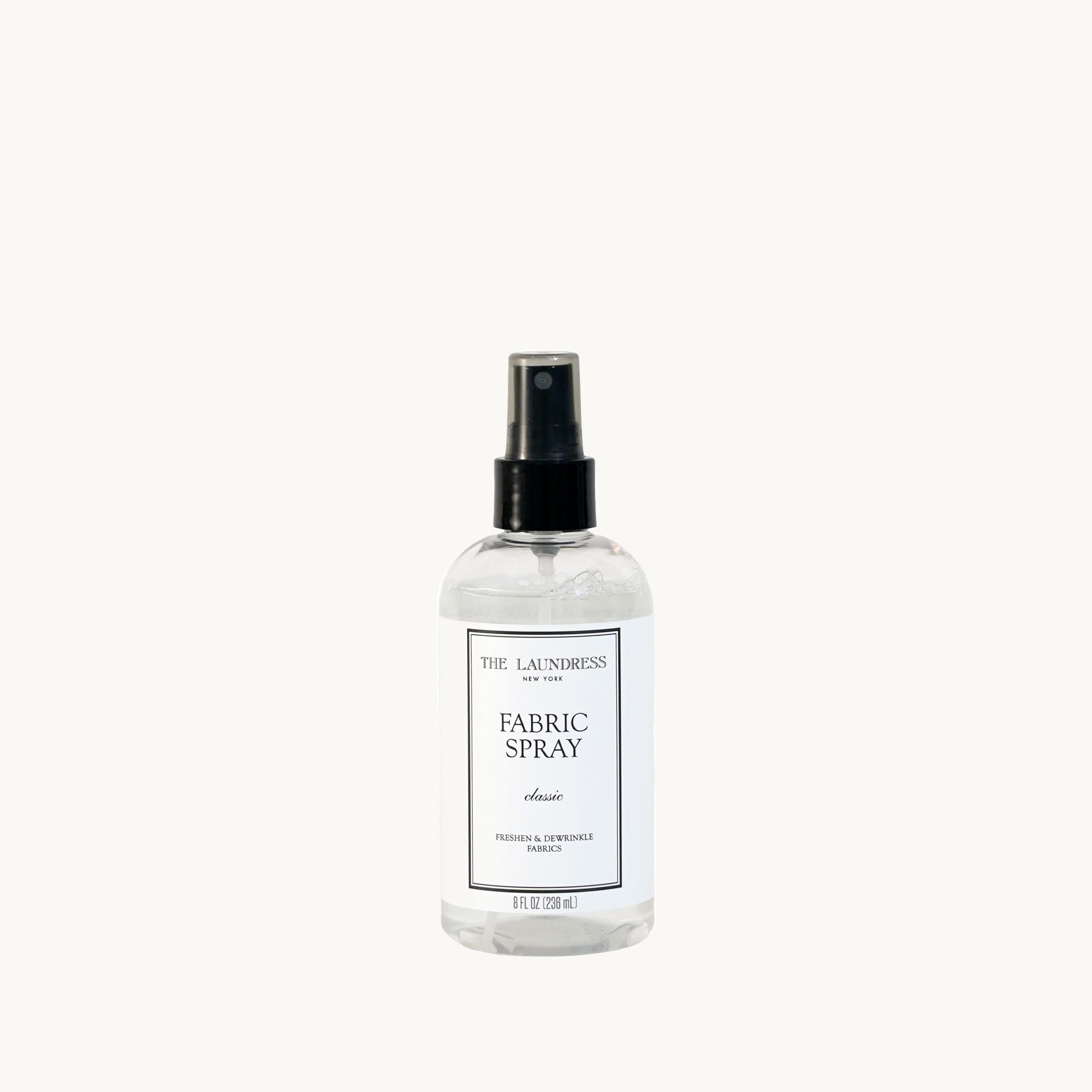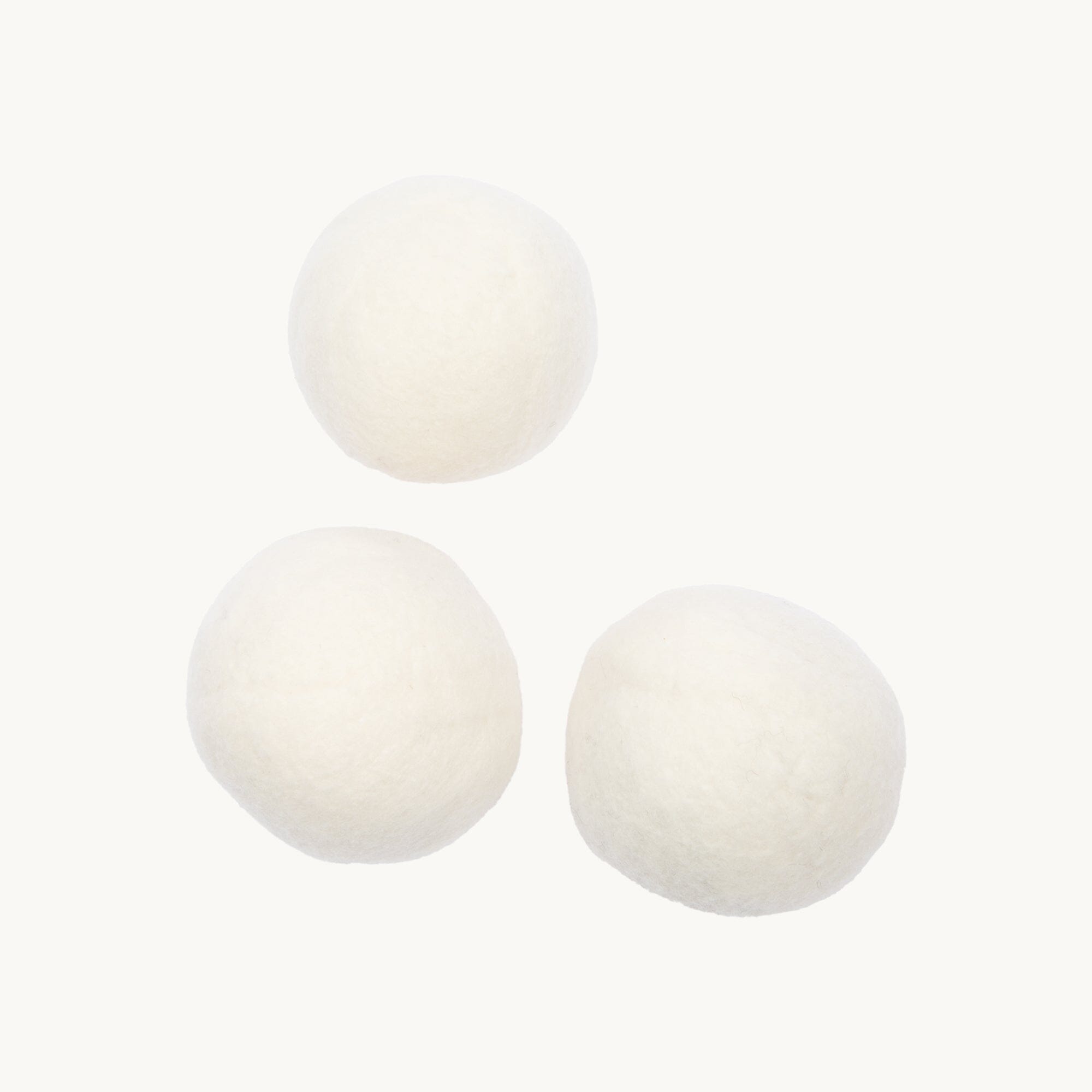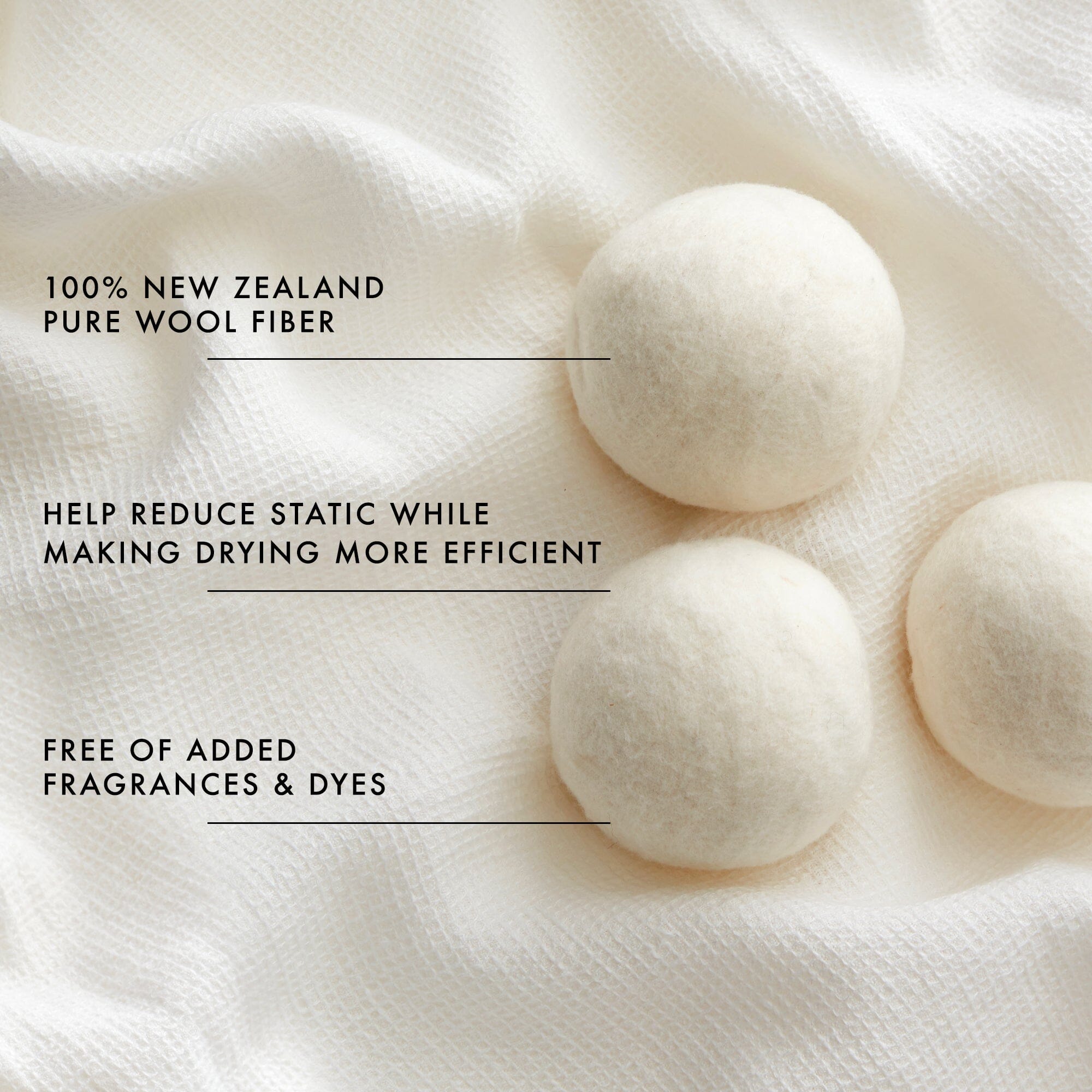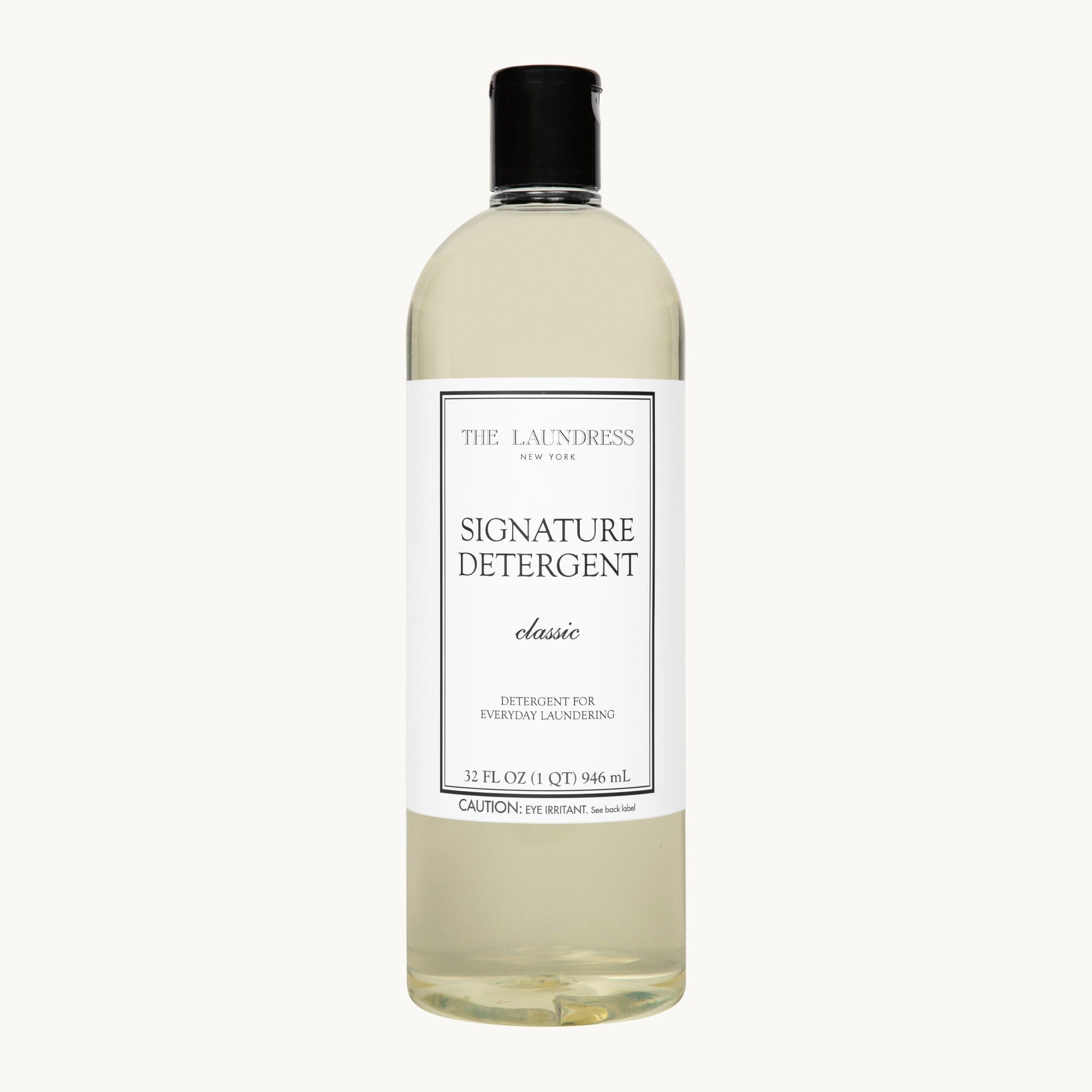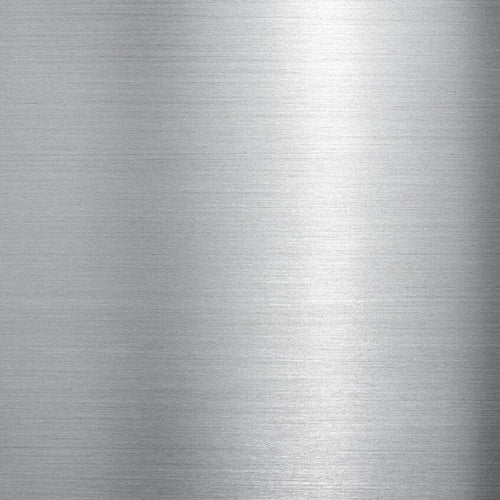A long lasting fiber derived from the sheep, goat, camel, alpaca, llama, rabbit or keeshond. The crimp retains heat and repels cold, making it a perfect choice for knits and outerwear.

Can you wash wool at home? Can wool be spot treated? Yes! You can wash wool sweaters, jackets, blankets, winter accessories, pants, and more from home, but if your wool item is structured or has a lining as a blazer, coat, or suit typically would, spot treat instead of washing. You can also steam wool fabrics after spot treating for a deeper clean!
- To spot treat your wool item, add a small drop of a stain remover or detergent appropriate for woolens to the stain, then add a few drops of cool water and create a lather. Use a damp Stain Brush to apply the lather to the stained areas, gently working it into the fabric.
- After lathering, remove all excess soap with a wet cotton cloth. Continue dampening the cloth with cool water as needed, and repeat the process until satisfied.
- If spot cleaning only, proceed with air drying by hanging the wool item or laying it flat to dry. Wool knits should typically dry laying flat, and wool outerwear can be hung up to dry. To help remove any water spots, wrinkles, or excess odor, steam the wool item. Wool should never be placed in the dryer.
Wondering how to treat stains on wool? Whether hand or machine washing wool, always pretreat stains with a stain remover appropriate for natural fibers and woolens. Always test stain treatments in an inconspicuous spot before applying to wool to help avoid damaging your garment. Keep in mind some heavily dyed woolens may not take well to stain removers. Always use cool or tepid water when treating stains on wool, and avoid soaking for over 30 minutes.
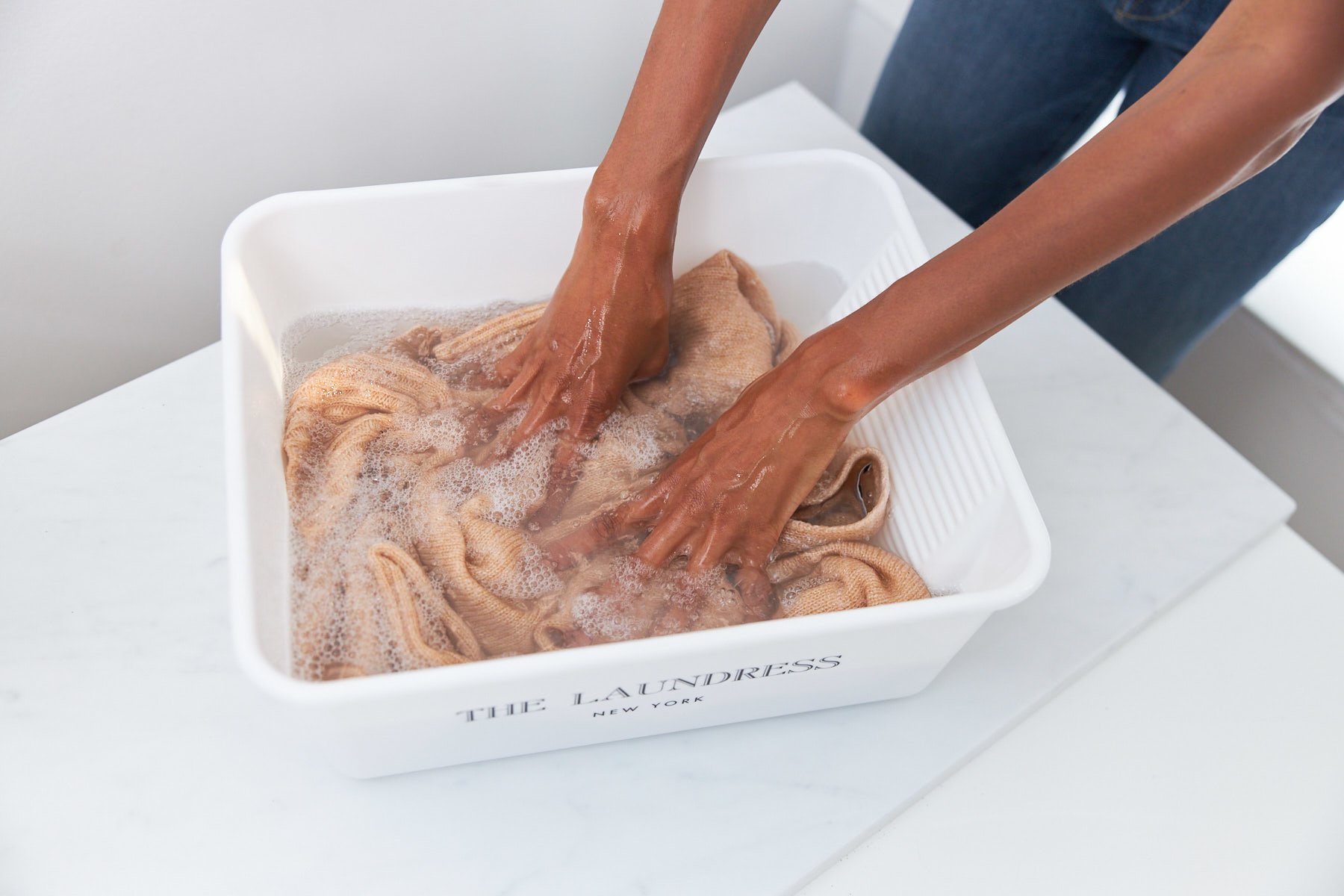

Hand washing wool is the best, gentlest way to clean wool at home as an alternative to dry cleaning. Some dry cleaning solvents and enzyme-rich detergents can damage the yarns in wool, so be sure to clean with a detergent appropriate for woolens. Wool is sensitive to water temperature and agitation, so a gentle hand wash for wool is ideal.
- To hand wash wool, add wool detergent (like our specially formulated Wool & Cashmere Shampoo) to a wash tub basin or sink filled with cool water. Wool clothes will shrink in hot water, so be sure to keep it cool.
- Mix the water and wool wash and soak for up to 30 minutes.
- Rinse well by running cool water through the wool item until the water is no longer soapy.
- Do not wring. Instead, gently press the water out of the wool item in between your hands. If there is color in the water, don’t worry - this is normal. The yarn is simply releasing excess dye.
While some delicate wool items should be hand washed, many wool garments such as heavy sweaters, blankets, and even wool coats can be machine laundered using gentle methods and a wool-specific detergent. Wool, felt, and other wool-like fabrics need to be washed with cold water and low spin. Cold water and low spin will help to ensure your wool doesn’t shrink, warp, or unravel during the wash. It’s especially important to always protect wool knits with a mesh bag to ensure they don’t snag and unravel.
- First, turn the wool item inside out, and place it in a Mesh Bag. Mesh washing bags add a layer of protection to fabrics, preventing snagging, tearing, and warping inside the machine during the spin cycle.
- Select the delicate, “handwash”, or wool setting on the washing machine, and make sure the water temperature is cold and the spin is on low.
- Add the appropriate amount of Wool & Cashmere Shampoo according to the machine and load size. This enzyme-free formula helps gently cleanse knits and woolens for a beautiful fabric finish.
- Remove wool items promptly from the washing machine once the cycle finishes to reduce creasing.


What’s the best way to dry wool? The safest—and only—way to dry wool is by air drying. Never, ever put wool clothing, including wool blends, in the dryer. The heat (even low heat) from machine drying will immediately shrink wool fabrics. When drying wool, avoid direct sunlight and heat sources, such as the radiator, because they can yellow, shrink, or damage woolens.
- Lay your wool item flat in its natural shape on a drying rack or on top of a clean towel to dry. Again, do not put it in the dryer!
- To achieve a crease-free finish, it’s important to use your hands to reshape your wool item and gently press away wrinkles.
- Expedite drying wool by laying the item flat on a clean towel. With the item in its original shape, roll it up in the towel (like a sleeping bag) to remove excess water.
- Never hang wet woolens, as the weight of the fabric can cause it to warp and permanently stretch into an unsightly shape.
Worried about reversing shrunken wool? If your wool item looks as though it has shrunken slightly in the wash—don’t fret. Wool yarns naturally tighten when wet, and will gently loosen during the drying process. This is why the reshaping step is key to achieving a “dry clean” looking finish to your wool. Take care to simply press, and not yank, the wool fabric to achieve the desired shape.
To remove tough wrinkles from dry wool garments, we recommend steaming for the best and safest finish. Do not iron, as ironing will crush or flatten the natural pile of the yarns. Keep in mind that smoothing wet wool fabric will help prevent wrinkles from occurring in the first place.
To freshen wool between washes, steam. Always launder wool items before putting them away for the summer season, as critters are attracted to residue from sweat and body oils (even those you can’t smell yourself).
When wool fibers become loose, they form little balls or pills. Pilling is a direct result of friction (which naturally occurs with movement), so the more you wear an item, the more likely it is to pill. High-quality cashmere and wool items contain longer yarns, making them less likely to pill until they have been worn many, many times. In addition, looser weave knits are more likely to pill than tighter weave ones, as there is more room for friction between the yarns.
Is pilling easy to lift? Yes! You can remove pills and lint on finer-gauge knits, such as lightweight sweaters, T-shirts, scarves, or pants by gliding a sweater comb across the affected areas in one direction. For heavier-gauge items, such as thicker sweaters, outerwear, or heavy upholstery, use a sweater stone. Sweater stones, often made of pumice, are designed to glide across thicker knits and open weaves. Keep in mind that when removing pills, you should always move the comb or stone with the direction of the item’s weave, not against it, to prevent snagging. When in doubt, use gentle, short combing motions, moving carefully across the fabric. Again, pilling occurs in high-friction areas, so be sure to address underarms, shoulders, cuffs, hip areas, and inseams.
Use a fine garment brush between wears to remove lint, fuzz, and hair and to release natural oils that rejuvenate yarns. This fine fabric brushes are designed to last a lifetime, and are a great alternative to single-use paper sticker lint rollers.
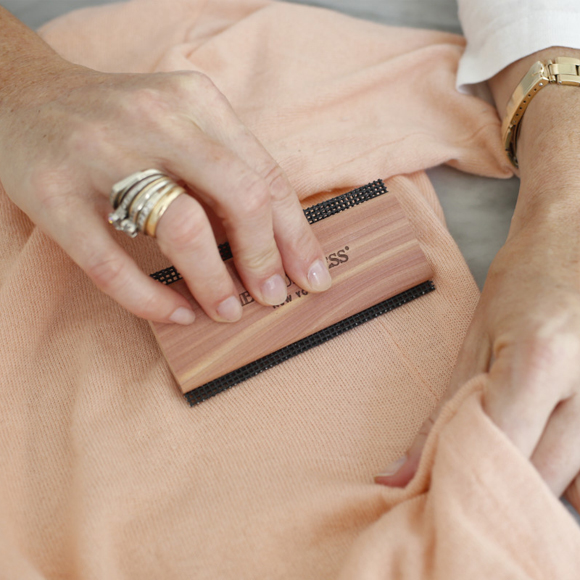
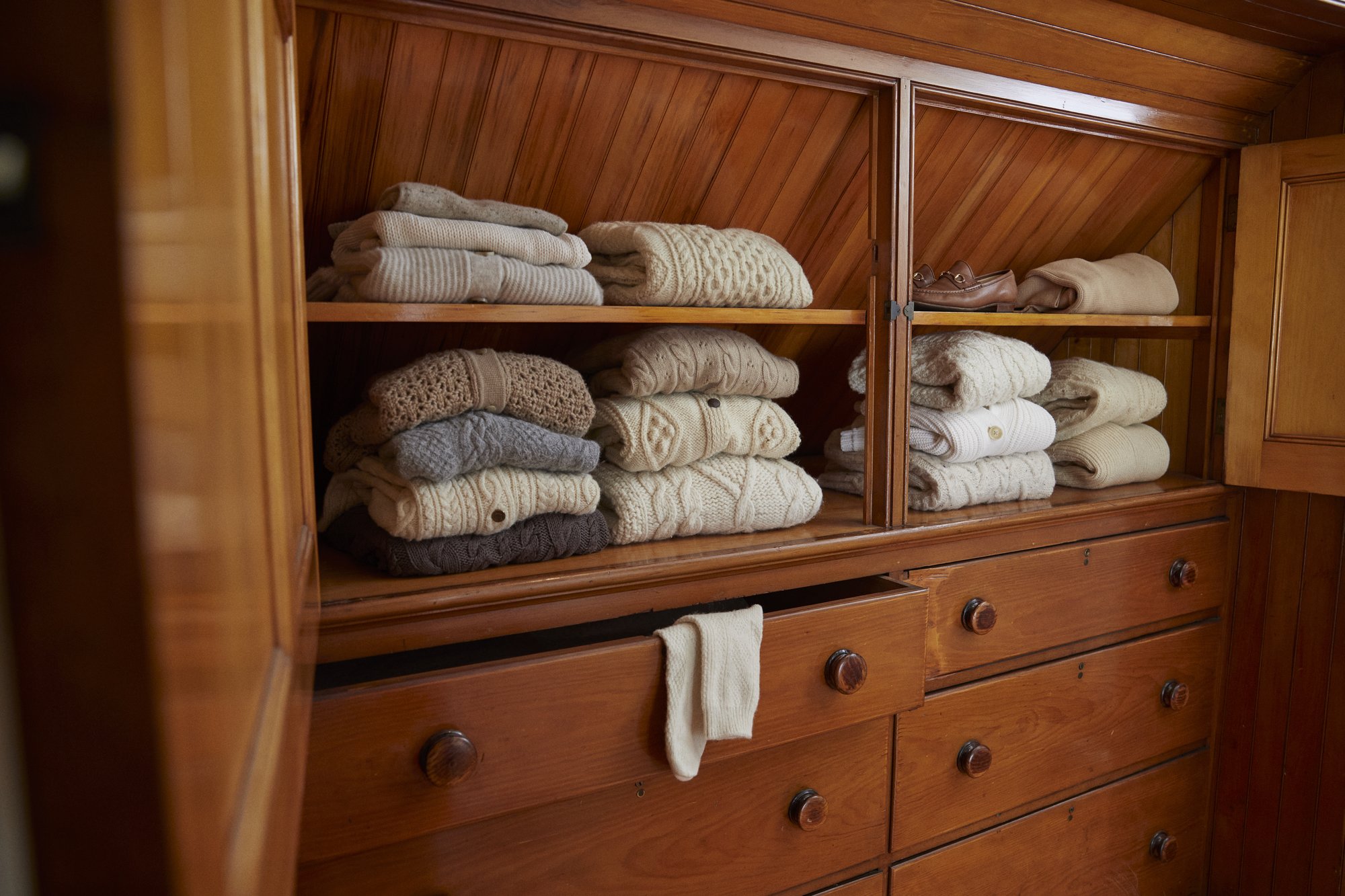
Wool items like sweaters, winter accessories, and coats should be stored folded to prevent stretching or distorting. Store jackets and suits using a solid structured hanger, and protect them using a sturdy, zippered cotton garment bag
Wool and cashmere are susceptible to insect damage, as critters love to dine on these natural fabrics. Always store items clean!
To properly protect wool, we recommend packing clothing and textiles in sturdy, reusable zippered bags made from breathable fabric, such as cotton or linen. Never stow away items in plastic or cardboard. Plastic bins, cardboard, and dry cleaner bags may look tidy, but are not suitable for long term textile storage as they attract and encourage bugs and bug reproduction. They can also trap moisture, which can lead to yellowing and mold spots on fabric.
By contrast, cotton and canvas bags allow for breathability while keeping items contained and free of dust. It’s also easy to clean reusable storage bags—we recommend steaming as needed in combination with a few spritzes of a cedar-infused fabric spray to keep bags feeling and smelling fresh. Toss in a few lavender pouches with your wool items during storage to keep them smelling fresh during their seasonal hibernation.
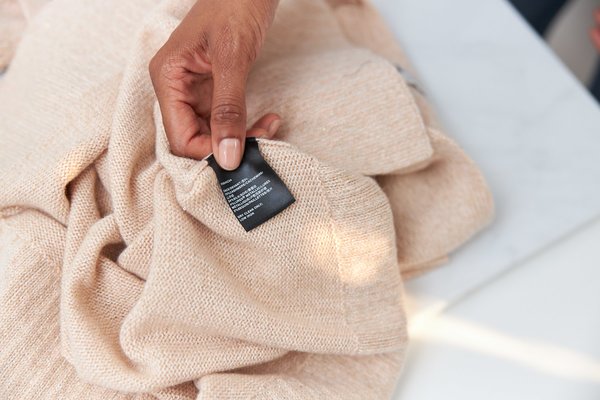

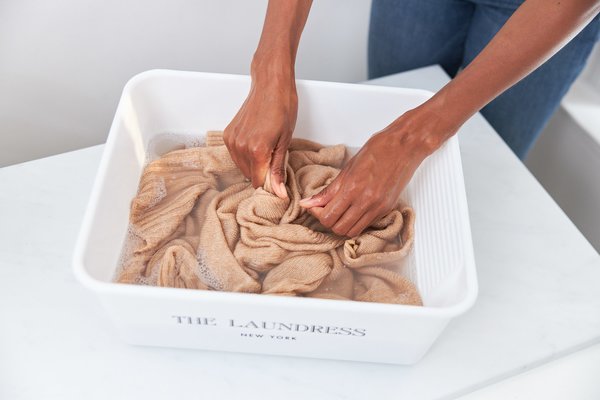


Shop The Story
Fights Old & New Stains On Fabrics
Aid Stain Removal
Dosing For Fabric Care
Dewrinkle Fabrics & Clean Laundry Scent
Fluff & Reduce Static During Drying
Detergent For Everyday Laundering


